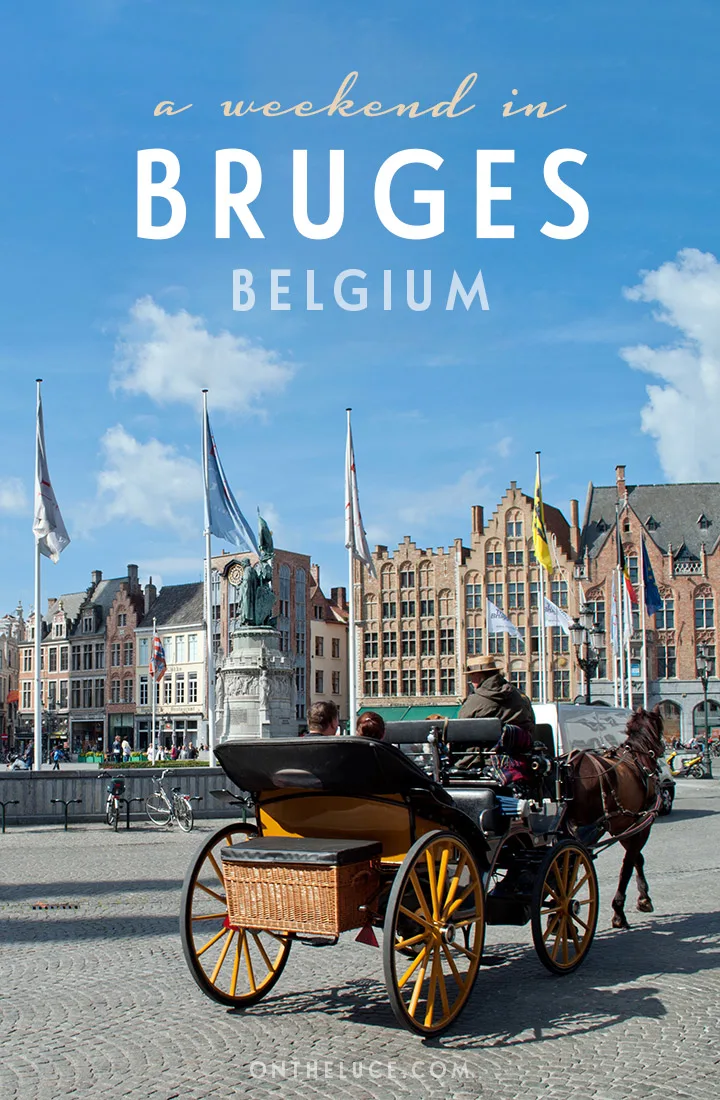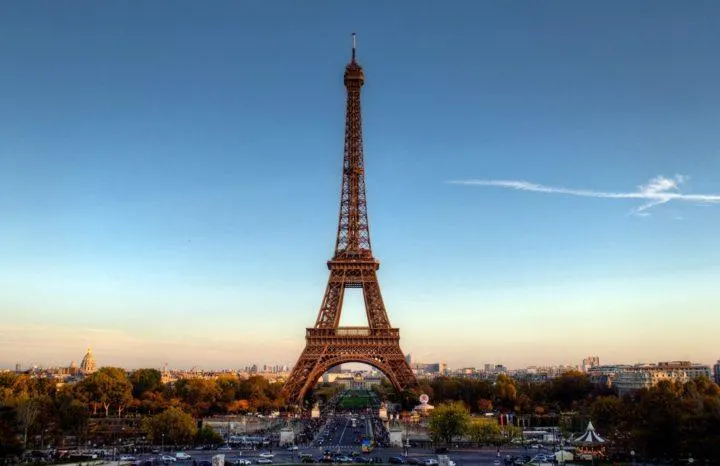How to spend a weekend in Bruges: The best things to see, do, eat and drink in the pretty Belgian city of Bruges in a two-day itinerary featuring its historic buildings, canal boats, beer and chocolate.
* This site contains affiliate links, where I get a small commission from purchases at no extra cost to you.

With its cobbled streets, crooked bridges, meandering canals and UNESCO World Heritage-listed medieval buildings, Bruges has to be one of Europe’s most beautiful cities. It’s a popular day trip destination, but it’s worth making a weekend of it to take full advantage of Bruges’ historic charms, as well as the Belgian beer and chocolate.
Bruges’ compact size means you can fit a lot into a weekend, and it’s quieter and more atmospheric in the mornings and evenings. So here’s my two-day Bruges itinerary to help you plan the perfect weekend in Bruges, with what to see, where to eat, drink and stay.
How to spend a weekend in Bruges

Friday evening
Check into your accommodation, then start your weekend in Bruges at 2be to try one of Belgium’s most famous exports – its beer. This bar and beer shop is known for its huge ‘wall of beer’, with over 2500 bottles lined up along one side of the building.
They sell beers from across Belgium, and you can sample a few in a beer tasting flight (just watch out for the 12% alcohol brews). There’s a waterside terrace overlooking the picturesque Rozenhoedkaai (Quay of the Rosary) which is a great spot to watch the tour boats sailing by, though be prepared to queue for a table on a sunny evening.
Then head to De Gastro on the other side of the canal for dinner. This family-run restaurant is an informal spot serving traditional French and Belgian dishes made with local ingredients, like rabbit and prunes in beer sauce or Zeebrugge fish stew.

Saturday morning
Start the day in the heart of Bruges at the Grote Markt or market square – it’s one of Bruges’ busiest spots so get there as early if you can to see it before the day-trip crowds arrive. This pedestrianised square (though watch out for horse-drawn carriages) is surrounded by historic gabled buildings, many now housing restaurants and cafés.
Towering above them is the medieval Belfort (belfry). It was built in the 13th century and its 47 bells were used to announce the time and as a fire alarm. And if you’ve seen the black comedy In Bruges, it’s also where one of the characters comes to a messy end.
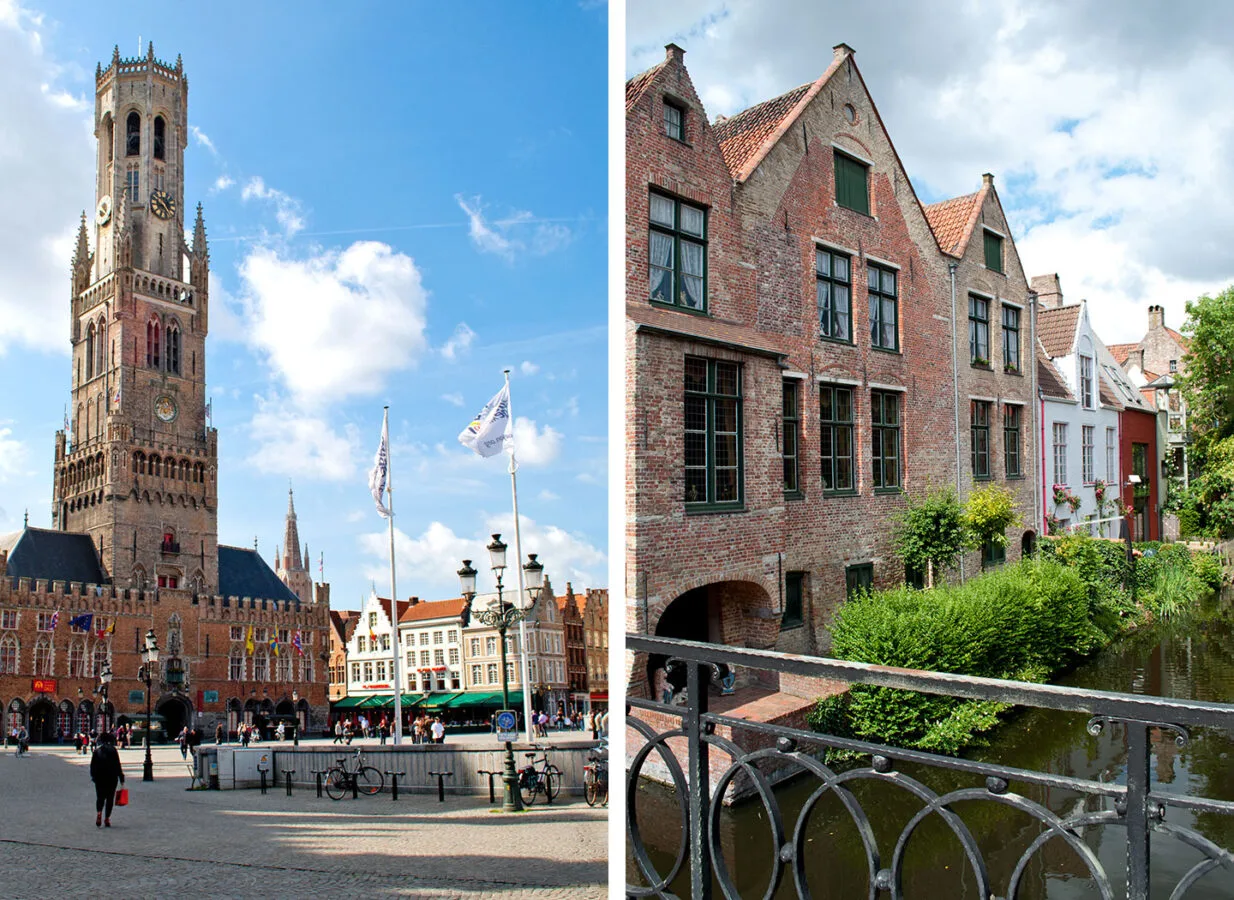
You can climb to the top of the 83-metre-high tower for spectacular 360-degree views out across Bruges’ rooftops. Though unlike Ghent, whose belfry has a lift, you have to climb 366 narrow, steep spiral stairs to get to the top, so it’s not one for the claustrophobic.
The neighbouring Burg square has been the administrative centre of Bruges for centuries. It’s surrounded by grand buildings, including the 14th-century Staduis (City Hall) with its golden vaulted ceiling and painted walls telling the story of the history of Belgium.
If you want to go inside the Staduis, tickets cost €8 and also cover the Burgse Vrije (Liberty Bruges) next door – though this is only open at weekends. This 18th-century Baroque former courthouse is now used as the City Records Office and is decorated with golden statues and oak carvings, and has a carved chimney dating from 1531.

Also in the Burg is the Basiliek van het Heilig Bloed (Basilica of the Holy Blood). This double-decker chapel has a Romanesque church below and a neo-Gothic church above. It gets its name from a piece of cloth stained with blood on display there, which was supposedly wiped from Christ’s wounds by Joseph of Arimathea after the Crucifixion.
From the Burg, head southwest across the canal towards the Onze-Lieve-Vrouwekerk (Church of Our Lady). If you’re feeling hungry, stop off at the House of Waffles to pick up another of Belgian’s favourite treats, with both sweet and savoury versions.

Saturday afternoon
The Church of Our Lady is a Gothic Roman Catholic church built between the 13th and 15th centuries. Its 115-foot-tall tower is the highest point in Bruges, and one of the tallest brick towers in the world. And inside there’s a museum* displaying the church’s artistic treasures, including a marble sculpture of the Madonna and Child by Michelangelo.
Next carry on south along the canal and cross the pretty Wijngaard Bridge to the Begijnhof. This peaceful square has 30 whitewashed houses set around a central garden. It was built in the 13th century for the beguines – religious women who didn’t take formal vows but lived together and never married. Today it’s home to a community of nuns.

South of the Begijnhof is Minnewater Park – also known as the Lake of Love and a favourite for a romantic stroll. Legend has it if you cross the bridge with your partner, your love with last for eternity. And look out for the swans, which are one of the symbols of Bruges.
Finish the afternoon with a brewery tour at De Halve Maan – The Half Moon. The brewery makes the popular Brugse Zot beer and runs 45-minute tours in English for €16 (book in advance at busy times). The tour goes through the brewing process and takes you along narrow passageways and up ladders onto the rooftop for views over Bruges.

The tour ends with a beer tasting, and there’s also a bar and restaurant. You can eat overlooking the brewing hall or on the terrace. The menu uses beer in dishes like carbonnades flamandes (Flemish beef and beer stew) and Brugse Zot beer paté.
Then head back into the centre of Bruges, stopping at the Rozenhoedkaai which is atmospherically lit up at night. If you fancy a nightcap – and a change from beer – call into the Brugse Gin Club, a speakeasy-style bar with just 20 seats. Knock on the door and if there’s space you can choose from their 500 gins, served with a jazz soundtrack.

Sunday morning
For something a bit different, take a morning walk through the medieval Kruispoort city gate to the east of the city, where you’ll find an area of parkland dotted with windmills. There were originally 25 of them which were used to grind grain to make flour, but only four are left now – the Sint Janshuismolen mill from 1770 is still in use too.
Then call into That’s Toast for brunch, which is served all day. As you’d guess from the name, toast features heavily on the menu, including the savoury Triple Madame with ham, cheese and egg, or you can indulge in a feast of French toast and mimosas.
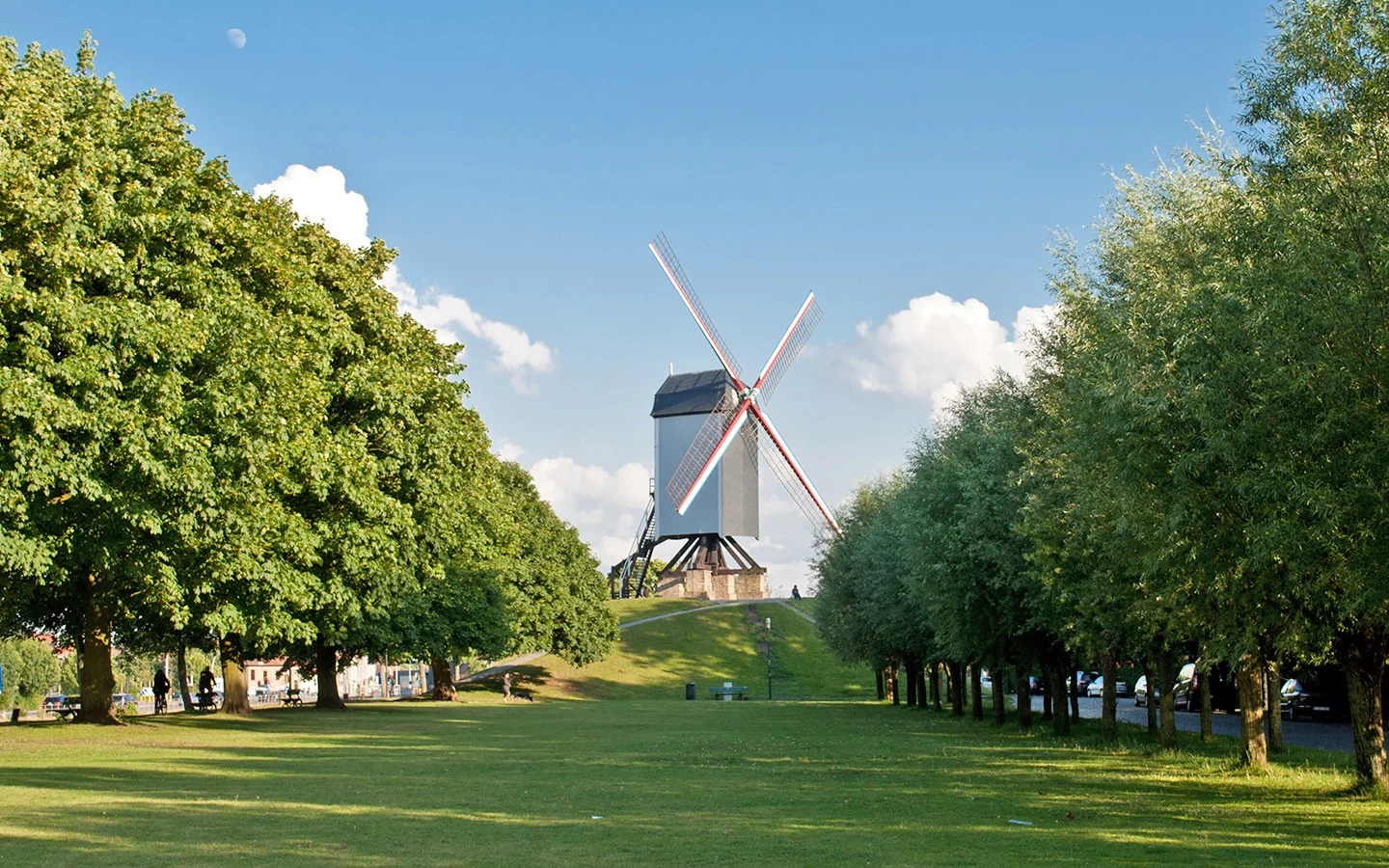
Bruges’ old town has more canals than roads, so a good way to see a different side of the city is by taking a boat trip. Trips around the canals last half an hour and run from five landing stages around the city centre – Rozenhoedkaai is the busiest, so try one of the quieter spots a bit further out of the centre if the queues there are too long.
Or why not get out of the city centre and explore a bit further afield with a boat trip out to the nearby town of Damme? The historic river boat Lamme Goedzak sails from Bruges to Damme four times a day from April to November and takes 35 minutes each way (you can also walk one way along the canal path which takes around 90 minutes).
The boat leaves from just outside Bruges’ city walls and follows a long, straight canal – originally built so that Damme could be used as a port for Bruges – for four miles. Damme has a book market and a central square surrounded by restaurants for lunch.

Sunday afternoon
Along with beer, Belgium’s other famous export is chocolate, and there are plenty of opportunities to try and buy it around Bruges. The Chocolate Line does amazing handmade chocolates with sometimes bizarre flavour combinations, like Miss Piggy (bacon and almond praline), Havana (tobacco leaves) and Atlanta (Coco Cola ganache).
If you want to find out more about chocolate, Bruges has a whole museum dedicated to it in a former wine tavern built around 1480. Choco-Story* is split into three sections, taking you through the history of cocoa and chocolate-making right back to the Aztecs, how chocolate is made and what it’s been used for. There’s also chance to try some samples.

Or get hands-on with an afternoon chocolate-making class.* This 2.5-hour tour was one of the highlights of our weekend in Bruges. You learn to make professional-style Belgian pralines and mendiants (chocolate discs studded with dried fruit and nuts).
The class starts with a lesson in how to temper chocolate to make it smooth and shiny. Then you craft the delicate shells for the praline and fill them with ganache or fillings like nuts and caramel. Any leftovers are used to make a rich hot chocolate, and you end up with around 30 handmade pralines to take home as the perfect souvenir of Bruges.

Map of things to do in Bruges
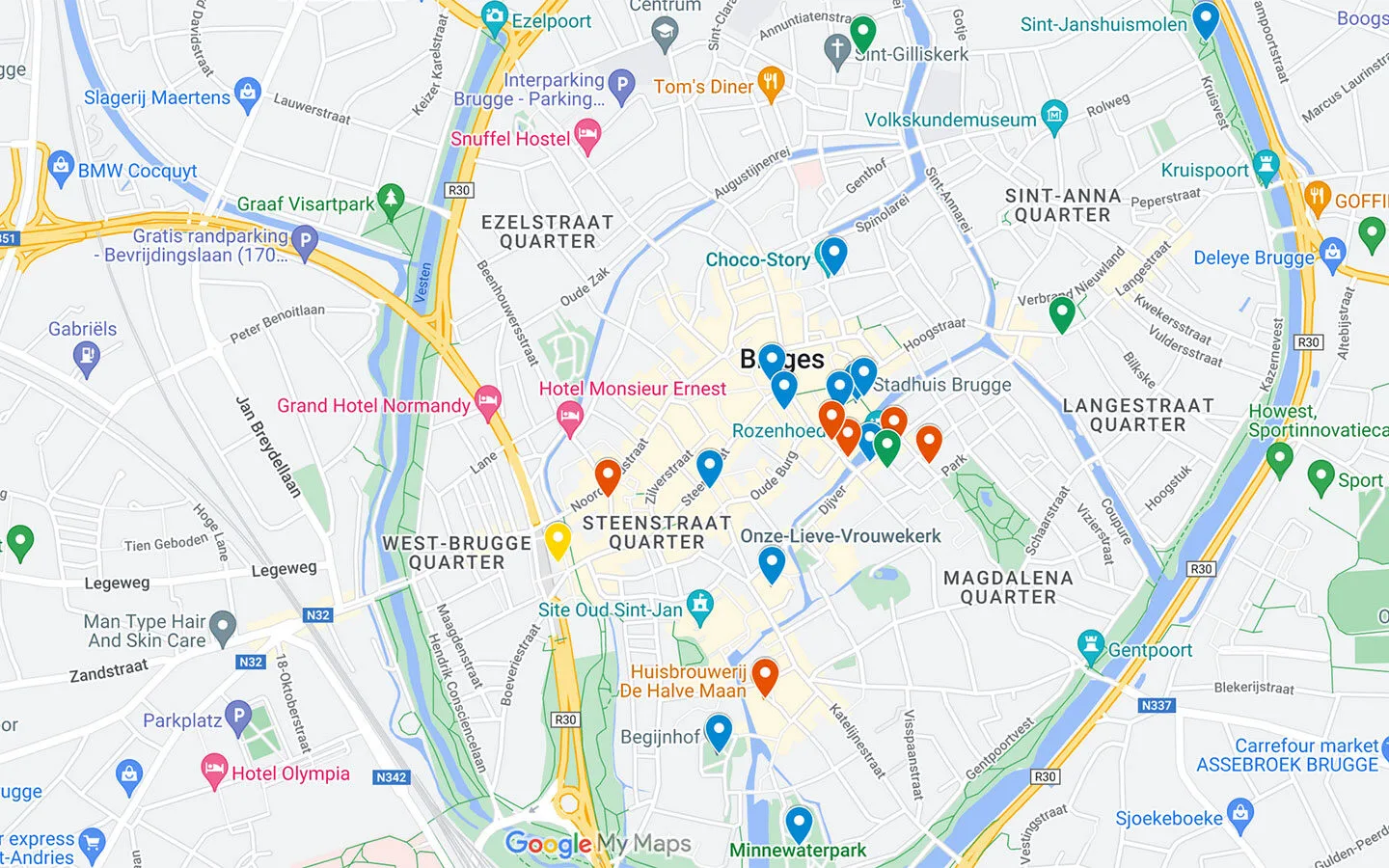
The details
When to visit Bruges
Bruges has a temperate oceanic climate, which means it doesn’t usually get too hot or cold. But it does get quite a lot of rain, so pack an umbrella and be prepared for showers. The peak summer season in July and August has the warmest weather with average high temperatures of 21°C (70°F), but also sees the biggest crowds and highest prices.
Spring is a great time to visit Bruges, with low rainfall and average highs of 12–16°C (54–61°F). Autumn temperatures are similar but it tends to be wetter. And winter is mild with average daytime highs of 6ºC (43°F) and nighttime lows of 2°C (36ºF). December is a popular time to visit for the Christmas markets, but January is usually quiet.

How to get to Bruges
Bruges has two train stations – the main station Brugge is around 20 minutes walk south of the historic centre, or Brugge-Sint-Pieters is 25 minutes’ walk to the northwest.
It’s just under an hour by train from Bruges to Brussels Midi/Zuid station, where you can connect to high-speed international routes to Paris (1 hour 20 minutes), Amsterdam (2 hours) and London St Pancras (2 hours). There are also frequent trains linking Bruges to other Belgian destinations like Ghent (25 minutes) and Antwerp (1.5 hours).
Bruges’ nearest airport is Brussels-Zaventem, which is 1.5 hours away by train. There are hourly direct trains and more frequent services where you change at Brussels Midi. There’s also Brussels South Charleroi Airport, which is popular with budget airlines. From there you can take a Flibco shuttle bus to Bruges, which takes 2 hours 10 minutes.
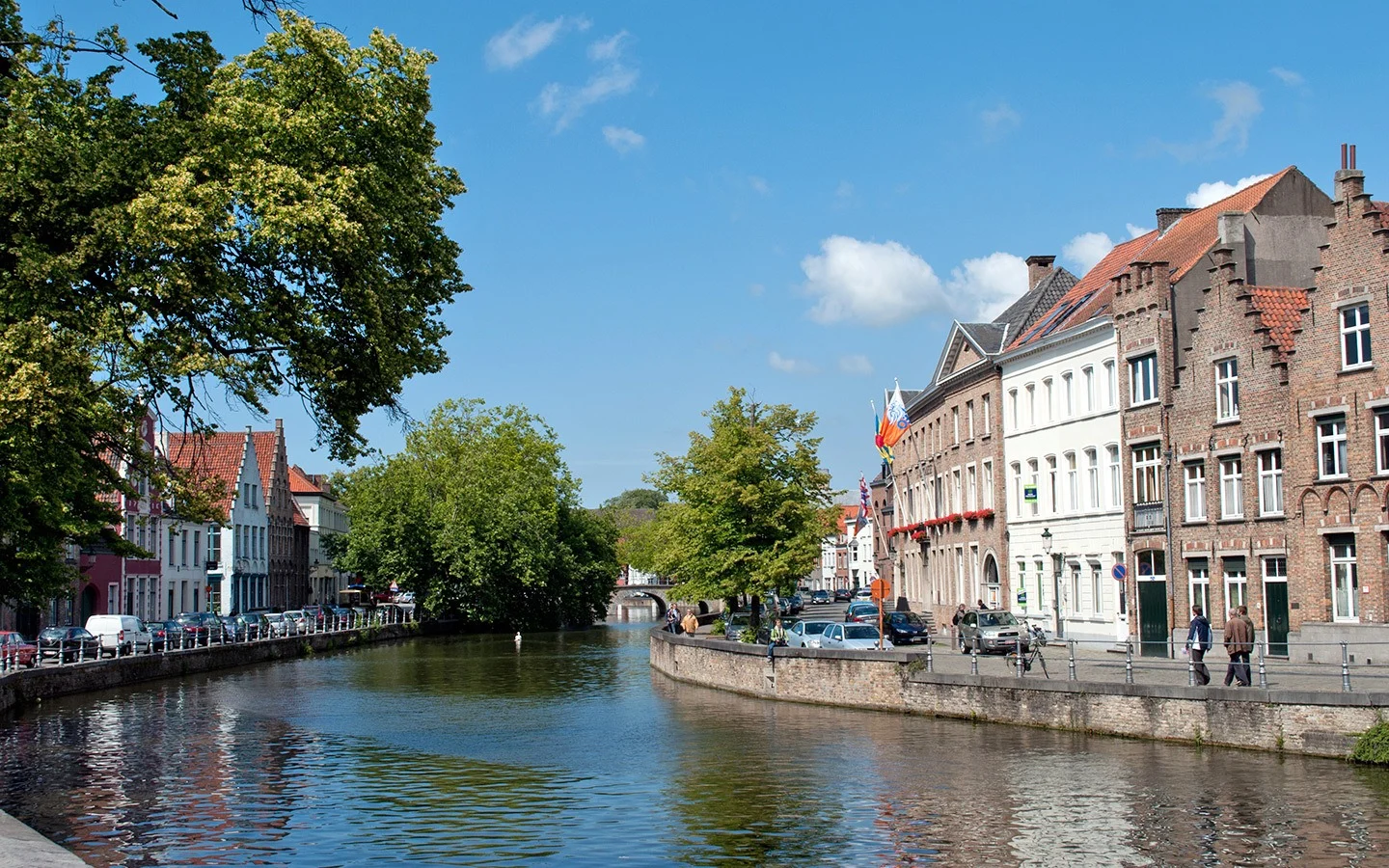
Getting around Bruges
The historic centre of Bruges is fairly small so it’s easy to explore on foot – though beware there are a lot of uneven cobbled streets. Many streets in the centre are car-free or have limited vehicle traffic, but there are bus services. Buses run between Brugge train station and the city centre up to every five minutes, stopping at ’t Zand Square.
A single ticket costs €2.50, and you can also get day tickets, three-day tickets and 10-journey tickets (known as a lijnkaart). You can buy them from the ticket shop or vending machines at the station, or you can also use contactless payment onboard.

Where to stay in Bruges
Eco-certified B&B Bariseele* is a romantic, adults-only escape on a quiet street 10 minutes from the Grote Markt. Their three en-suite bedrooms have kitchenettes, sofas and dining areas. Breakfast (which you can have in your room) comes with chocolate included, and there are bikes for hire, a guest sauna and lots of local insights from owner Benny.
Located in a converted 18th-century townhouse, The Pand* has a great central location near Rozenhoedkaai. It’s an elegant place to stay, with antique furniture, sparkling chandeliers and a wood-panelled library. There are 26 bedrooms, from small Charming rooms to a Master Suite with whirlpool bath, plus a bar and courtyard garden.
Or the Flanders Hotel* is a good-value option a short walk to Bruges’ historic centre. Its 50 bedrooms are modern and stylish, with rainfall showers and air conditioning, and some have balconies. There are also two gardens and a small indoor swimming pool.

Save for later
